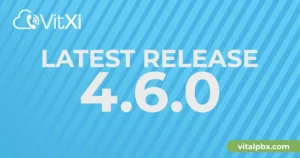Your PBX Hardware Is Aging – Is It Time for Retirement?
In the fast-paced world of business communications, relying on outdated technology can be more than just an inconvenience; it can be a significant roadblock to growth and efficiency. If your business is still running on an old Private Branch Exchange (PBX) system, you might be facing increasing challenges. The question isn’t just if your aging PBX hardware will fail, but when, and what the cost will be to your operations. As we look towards 2025, ensuring your communication infrastructure is robust, secure, and feature-rich is paramount. This guide will help you identify the signs that your PBX is due for retirement and explore the benefits of upgrading to a modern solution.
The Warning Bells: Signs Your PBX Hardware is Crying Out for Retirement
Recognizing when your PBX hardware is past its prime is the first step towards a necessary upgrade. Ignoring these signs can lead to bigger problems down the line. Keep an eye out for these telltale indicators that your current system is struggling to keep up.
Declining Call Quality and Frequent Dropped Calls
Is your team regularly complaining about crackling lines, echoes, or calls that mysteriously drop mid-conversation? Deteriorating call quality is a classic symptom of aging PBX components. As hardware ages, its performance degrades, directly impacting the clarity and reliability of your business’s primary communication tool.
Skyrocketing Maintenance Costs and Scarcity of Parts
Are your IT support tickets for PBX issues piling up? Old PBX systems often require frequent, costly maintenance. Finding replacement parts for discontinued models can become a frustrating and expensive treasure hunt. Technicians familiar with legacy systems are also becoming rarer, further driving up support costs. If your maintenance budget for the PBX is steadily climbing, it’s a strong financial argument for an upgrade.
H3: Lack of Modern Features Expected in 2025
Modern businesses thrive on features like video conferencing, instant messaging, mobile integration (softphones), and advanced call routing. If your PBX can’t offer these, you’re missing out on productivity gains and enhanced collaboration. An outdated PBX may not integrate with newer CRM systems or other business applications, creating data silos and inefficient workflows. In 2025, a lack of unified communications capabilities is a significant competitive disadvantage.
Growing Security Vulnerabilities in Legacy PBX Systems
Older PBX hardware often runs on outdated firmware that no longer receives security patches. This makes your communication system a prime target for hackers looking to exploit vulnerabilities for toll fraud, data breaches, or eavesdropping. The potential cost of a security incident far outweighs the investment in a new, secure system. Reputable sources like the Cybersecurity and Infrastructure Security Agency (CISA) frequently warn about the risks of unpatched systems.
Scalability Limitations: Is Your Old PBX Stifling Growth?
As your business grows, your communication needs expand. Legacy PBX systems often have rigid limitations on the number of users, lines, or locations they can support. Adding new employees or opening a new branch office can become a complex and expensive endeavor with an old system. A PBX that can’t scale with your business is actively hindering its potential.
The Perils of Procrastination: Risks & Costs of Outdated PBX Systems
Continuing to use an aging PBX hardware system isn’t just about dealing with a few operational quirks. It exposes your business to significant risks and hidden costs that can impact your bottom line, reputation, and overall agility.
Lost Productivity and Missed Business Opportunities
System downtime, poor call quality, and inefficient call handling all lead to lost productivity. Employees waste time dealing with phone issues instead of focusing on their core tasks. Moreover, if customers can’t reach you easily or have a bad experience when they do, they might take their business elsewhere. Missed calls can mean missed sales and lost revenue.
A Tarnished Customer Experience
Your phone system is often the first point of contact for your customers. A system that drops calls, has poor audio, or lacks professional features like auto-attendants and efficient call queuing can create a negative impression. In an era where customer experience is a key differentiator, an unreliable phone system can severely damage your brand perception.
Mounting Compliance and Regulatory Headaches
Certain industries have strict regulations regarding call recording, data security, and communication logs (e.g., HIPAA, GDPR). Outdated PBX systems may lack the necessary features or security protocols to meet these compliance requirements, putting your business at risk of hefty fines and legal repercussions. Ensuring your communication tools are compliant is a non-negotiable aspect of modern business.
The Inevitable End-of-Life (EOL) Declaration
All hardware eventually reaches its End-of-Life (EOL) or End-of-Support (EOS) date. When a manufacturer declares a PBX system EOL, it means they will no longer provide updates, security patches, or technical support. Replacement parts become virtually impossible to find. Operating an EOL system is like walking a tightrope without a safety net – a critical failure could cripple your communications indefinitely.
Stepping into 2025: The Transformative Power of Modern PBX Solutions
Retiring your old PBX isn’t just about avoiding problems; it’s about embracing opportunities. Modern PBX solutions, especially software-based systems like VitalPBX, offer a wealth of features and benefits that can transform your business communications and prepare you for the demands of 2025 and beyond.
Enhanced Features for a Connected Workforce: Unified Communications and More
Modern PBX systems go far beyond basic call making and receiving. They offer Unified Communications (UC) capabilities, integrating voice, video, instant messaging, presence, and more into a single platform. Key features often include:
- VoIP Technology: Clearer calls and cost savings. (If you’re new to this, check out our article on [Understanding VoIP Fundamentals – placeholder link to vitalpbx.com/blog/voip-fundamentals])
- Mobility: Softphone apps for desktops and smartphones, allowing employees to stay connected anywhere.
- Video Conferencing: Built-in tools for virtual meetings.
- Advanced Call Management: Sophisticated IVRs, call queues, ring groups, and automated attendants.
- CRM Integration: Seamless connection with your customer relationship management software.
Superior Scalability and Flexibility for Your Evolving Business
Unlike the rigid constraints of legacy hardware, modern PBX solutions, particularly cloud-based or software-defined options, offer incredible scalability. Adding new users or locations is often as simple as adjusting a software license, allowing your communication system to grow effortlessly with your business. This flexibility is crucial for adapting to changing market conditions or business strategies.
Significant Long-Term Cost Savings
While there’s an initial investment, a modern PBX can lead to substantial long-term savings. These savings come from:
- Reduced maintenance costs (less hardware to fail, easier software updates).
- Lower call rates, especially for long-distance and international calls via VoIP.
- Elimination of expensive proprietary hardware.
- Increased productivity, reducing indirect costs.
Robust Security and Unwavering Reliability
Modern PBX solutions are designed with security at their core. They benefit from regular software updates, encryption protocols, and advanced security features to protect against modern threats. Furthermore, software-based and cloud PBX systems often offer better redundancy and disaster recovery options, ensuring business continuity even if your physical office is affected.
The Rise of Software-Based and Cloud PBX Solutions
The trend is clearly moving away from bulky, on-premise hardware towards more agile solutions.
- Software-Based PBX (like VitalPBX): Can be deployed on your own hardware, in a virtual machine, or in the cloud, offering maximum control and customization.
- Cloud PBX (Hosted PBX): The provider manages the infrastructure, offering ease of use and predictable monthly costs. (Explore more about the [Benefits of Cloud PBX for Small Businesses – placeholder link to vitalpbx.com/blog/cloud-pbx-smb])
Navigating the Upgrade: Choosing Your Next-Generation PBX
Once you’ve decided to retire your aging PBX hardware, the next step is planning the transition. A thoughtful approach will ensure a smooth upgrade and help you select the system that best fits your needs for 2025 and beyond.
Thoroughly Assess Your Current and Future Communication Needs
Before looking at new systems, understand how your business communicates now and how you envision it communicating in the future. Consider:
- Number of users (current and projected growth).
- Call volume and patterns.
- Essential features (e.g., call recording, IVR, conferencing).
- Integration requirements (CRM, helpdesk software).
- Remote work and mobility needs.
- Budget constraints and preferences (CapEx vs. OpEx).
Choosing the Right PBX Deployment Model: On-Premise, Cloud, or Hybrid?
Modern PBX solutions come in various flavors:
- On-Premise Software PBX: You host the PBX software on your own servers (physical or virtual). Offers high control and customization. VitalPBX excels in this area.
- Cloud-Hosted PBX: A third-party provider hosts and manages the PBX. Offers simplicity, scalability, and often lower upfront costs.
- Hybrid PBX: Combines elements of on-premise and cloud solutions, perhaps for specific functionalities or branch offices.
The best choice depends on your IT resources, security requirements, budget, and desire for control.
Consider a Phased Rollout vs. a Full Cutover
For larger organizations or those with complex setups, a phased rollout might be preferable. This involves migrating users or departments in stages, allowing for adjustments and minimizing disruption. Smaller businesses might opt for a full cutover, typically scheduled during off-peak hours.
Why VitalPBX Could Be Your Ideal Upgrade Path from Legacy Systems
VitalPBX offers a powerful, flexible, and feature-rich software-based PBX solution that can be an excellent replacement for your aging hardware. Key advantages include:
- Flexibility: Deploy on your own hardware, virtualized environment, or in the cloud.
- Rich Feature Set: Includes all the modern UC features businesses need. (Discover [Key Features of VitalPBX – placeholder link to vitalpbx.com/blog/vitalpbx-features])
- Scalability: Easily scales from small businesses to large enterprises.
- Cost-Effectiveness: Offers a robust free version and affordable commercial add-ons, providing excellent value.
- User-Friendly Interface: Simplifies administration and management.
Your PBX Modernization Questions Answered (FAQ)
Migrating from an old phone system can bring up many questions. Here are answers to some common queries regarding PBX retirement and modernization.
How long does PBX hardware typically last?
Traditional PBX hardware has a typical lifespan of 7-10 years. However, technology advances so rapidly that a system might become functionally obsolete (lacking essential modern features) much sooner, often within 5-7 years. Beyond this, maintenance becomes costly and reliability decreases.
What are the main security risks of old PBX systems?
Outdated PBX systems are vulnerable to toll fraud (unauthorized calls billed to you), denial-of-service (DoS) attacks, eavesdropping on calls, and data breaches if integrated with other systems. Lack of security patches is the primary culprit. According to industry reports, telecommunication systems remain a significant target for cybercriminals.
Can I keep my existing phone numbers if I change my PBX?
Yes, in most countries, phone number portability allows you to keep your existing phone numbers when you switch to a new PBX provider or system, including VoIP services. This process is standard and usually straightforward.
What’s the difference between a cloud PBX and an on-premise software PBX like VitalPBX?
A cloud PBX is hosted and managed entirely by a third-party provider in their data centers. You access it over the internet. An on-premise software PBX (like VitalPBX) means you install and manage the PBX software on your own servers, which can be physical machines at your office or virtual servers you control (even in a private cloud). VitalPBX offers the flexibility to choose your deployment environment.
How can a new PBX improve remote work capabilities for 2025?
Modern PBX systems are built for the distributed workforce of 2025. Features like softphone applications for laptops and smartphones, “find me/follow me” call routing, unified messaging (voicemail-to-email), and built-in video conferencing empower employees to work effectively from anywhere with an internet connection.
Is it expensive to upgrade to a modern PBX?
While there is an upfront investment, the total cost of ownership (TCO) for a modern PBX, especially a software-based one like VitalPBX, is often lower than maintaining an old hardware system. Savings come from reduced hardware costs, lower maintenance, cheaper call rates (VoIP), and increased productivity. Many modern solutions offer subscription models, shifting costs from CapEx to predictable OpEx.
Don’t Let Your Old PBX Hold You Back in 2025
The signs are clear: aging PBX hardware is more than just a nuisance; it’s a liability. From escalating costs and security risks to missed opportunities and poor customer experiences, clinging to an outdated phone system can significantly hinder your business’s progress, especially as we head into 2025.
The good news is that modern PBX solutions offer a transformative upgrade. They provide the advanced features, scalability, reliability, and security your business needs to thrive in today’s competitive landscape. By carefully assessing your needs and exploring options like VitalPBX, you can transition to a communication platform that not only solves current problems but also future-proofs your operations.
Ready to explore a modern, feature-rich, and reliable communication solution designed for the demands of 2025?
Download and try VitalPBX today and experience the future of business communications! Take control of your communications and unlock new levels of efficiency and collaboration.




